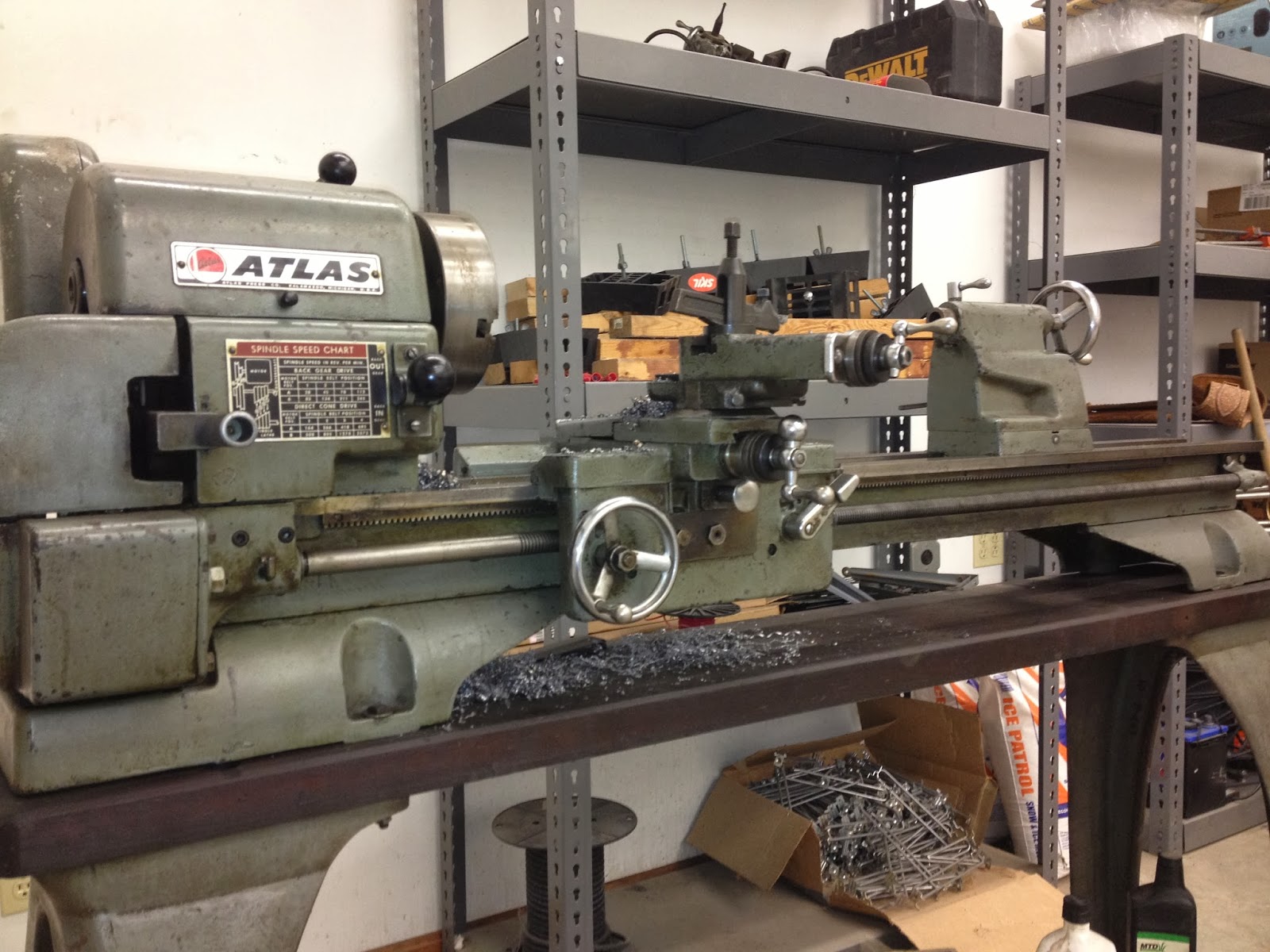

I'm thinking that the mesh may have been too tight, and, with the higher speed in back gear, popped it partially out of gear, and with the brittle teeth, they just disintegrated.
Atlas lathe gears manual#
I spent some more time reading the manual, and in a totally different part of the manual from where they give the belt speeds, they say not to run the back gears at the higher speeds (i.e., with the belt in the faster of the two positions). There will be less potential for wear without lubrication than with.

Certainly a little lubrication would help BUT what is more injurious to Zamak gears than lack of lubrication is lubrication that attracts and traps airborn dust, dirt, grit, and chips.

PS - I have always been told to run Zamak gears dry. If you reassemble properly and don't abuse the mechanism you should have at least 25 years of time on the clock. Then there were always some (many?) folks who used the back gears to lock the spindle against an impact, say for removing a stuck chuck for instance, and sheared off gear teeth in the process. Add to that the tendency for the Atlas 10 and 12 back gears to "buck" against each other under power and you have the possibility of tooth breakage. Collectors of pre-war toy trains, such as Lionel standard gauge, discovered this when after 25 years in the attic the die-cast wheels and other parts began to crumble. Improvements in die-casting metalurgy are continually being made so it is not a problem now but the older the die-casting the more embrittled it will have become. You are no doubt aware that all Atlas/Craftsman gears were die-cast in zinc-aluminum (Zamak - or Mazak in the UK) but what many people don't realize is that zinc-aluminum castings grow brittle as they age. At the time of its last restoration (ca 1975) there were a number of missing teeth in the headstock gears. I also restored and still have an Atlas 10F (mfgd ca 1953). I don't think it had to do with shims or fits although you are right to pay attention to that. How do I determine the proper engagement of those gears? Are there different thicknesses of shims that adjust the engagement of the gears? Any other ideas of what could have casued this, and how I can make sure it doesn't happen again?

Having just bought two new gears, I sure don't want to have this happen again. The back gear shaft turns smoothly, and has no play in it that I can detect, in any direction. When I reassembled it, in the original re-build, I did replace the shims under the brackets that hold the back gear shaft. I'm not sure what could have caused this, other than perhaps the gears weren't meshed properly- perhaps too much or too little lash? The gears were both already on the lathe when I got it, and appear to be original. It was kind of half disengaged when I turned the lathe off. I think the lever that engages the back gear may have popped out of its fully engaged position before the crunching sound came, but I am not sure. :-\ I was not cutting on the lathe when it happened- I was just bringing the tool to the workpiece. It ran OK for a few minutes, but suddenly there was a nasty crunching sound, and the bull gear and the back gear it engages were stripped of a number of teeth. The other day, I needed about 80 RPM, so I engaged the back gear, set the belt on the proper pully for that RPM, according to the Atlas Manual of Lathe Operations, released the pin in the bull gear, and flipped the switch. I restored an Atlas 10F-54 some time ago, and hadn't used the back-gear much. I'm relatively new to machining, and this is my first call for help here, tho I have been lurking for a while, and enjoying all of the knowledge you all are sharing.


 0 kommentar(er)
0 kommentar(er)
